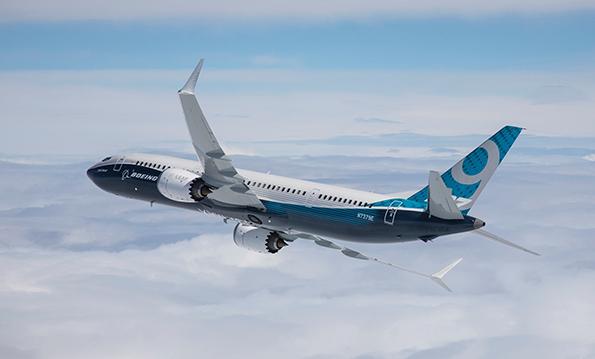
Airline passengers may have taken a wait-and-see approach to air travel in 2021 as COVID-19 variants surged, but commercial airframers and air transport buyers had few problems sourcing funding for new aircraft deliveries.
- No Boeing commercial deliveries required company financing
- Export credit agencies surprisingly sit out the recovery
Thanks to private sector investors that stepped in while traditional commercial banks and export credit agencies did not, $64 billion in funding was available for commercial aircraft deliveries manufactured by Airbus, Boeing, Bombardier and Embraer as well as for the Comac ARJ and C919 aircraft, Mitsubishi MRJ, Irkut MC-21, Bombardier Q400 and Sukhoi Superjet model types. That figure is up from $59 billion in 2020 but far below the $98 billion in 2019 and a recent peak of $126 billion in 2018.
The news came on May 2 as Boeing Capital Corp. (BCC), the wholly owned bank subsidiary of Boeing, released the 2022 version of its annual Commercial Aircraft Finance Market Outlook (CAFMO). In a teleconference with reporters, Boeing executives promoted an optimistic outlook for air transport deliveries based on the 2021 results.
“Financiers and investors remain committed to the long-term fundamentals that continue to make aircraft a valuable asset class,” BCC President Tim Myers said. “Despite the changing landscape since the emergence of the COVID-19 pandemic, the industry remains resilient, and there continues to be sufficient liquidity in the market for our customers with increasing opportunities as traffic recovers.”
Additionally, the 2021 data entailed some surprises even for the executives. Excluding customer concessions for delayed 737 MAXs or 787s, Boeing did not have to finance the delivery of any of its airliners in 2021—the second year in a row that third parties have backed all aircraft receipts.
One of the line items that stands outs in Boeing’s CAFMO report: 35% of Boeing’s air transport deliveries in 2021 were funded by cash. BCC Vice President of Customer Finance Rich Hammond and Managing Director of Capital Markets and Outreach Ben Faires said they did not expect cash to remain the top financing mechanism for company aircraft going forward, adding that the trend likely reflected short-term market effects of the pandemic.
The executives also said they were relatively surprised by lower levels of commercial bank debt activity in financing Boeing aircraft in 2021. They said they see “pockets” of growing bank debt activity as risk tolerances creep back toward pre-pandemic levels. But commercial banks remain focused on supporting preexisting customers or those in their own regions rather than a worldwide clientele.
“What we have not seen them do is expand their business,” Hammond said.
Another relative surprise was how little export credit agency (ECA) activity was involved in supporting Boeing deliveries last year. Historically, ECAs were a major or leading financing backstop for Airbus and Boeing deliveries during recessions and international crises. But in 2021, the second year of the COVID-19 crisis, they were responsible for slightly less than 5% of funding for Boeing deliveries, data from the report shows.
By contrast, institutional investors and funds continue to seek aviation exposure for their portfolios, “filling in where traditional sources of capital retrenched,” the Boeing executives said. Indeed, private sector financing interest is so robust that the Boeing executives declared the marketplace to be healthy overall.
“In the long run, we believe the fundamental investment thesis for this industry remains intact,” Faires said.
North America accounted for 51% of Boeing delivery funding in 2021, including 48% from the U.S. Europe made up 24% of funding for Boeing aircraft last year, while both the Middle East and the Asia-Pacific region came in at 11% each. China and Russia were 3% apiece.
Lessor activity remains as active as ever, the Boeing executives said. They counted 193 lessors in 2021, the year that General Electric sold its majority stake in GE Aviation Capital Services to Ireland’s AerCap to form the world’s largest lessor. There have been at least 192 lessors since 2017, Boeing data shows.
“The market is still very diverse and very competitive,” Faires said.
Asked about customer compensation deals that Boeing has struck over delayed deliveries of 737s and possibly 787s, the Boeing executives explained that those arrangements are not included in CAFMO calculations. Boeing has racked up billions of dollars’ worth of concessions to customers as its narrowbody and widebody programs were halted. It does not reveal to whom or how much, but the company accounts for them as part of financial charges it has revealed for several quarters. Boeing leaders have said they expect to get through “most” of it by 2023.
Regarding the Russia-Ukraine war and how that could affect aircraft delivery financing, the BCC executives said it was still too soon to tell. “We don’t see any negativity outside a particular region so far,” Hammond said.
Assuming the current trajectory holds, the healthy financing outlook presented by Boeing is crucial for underpinning its—and the whole commercial aircraft marketplace’s—growth prospects. The Boeing 2021 Commercial Market Outlook, a separate annual 20-year forecast addressing the market for all commercial airplanes and services, forecasts demand for more than 43,500 new aircraft worth $7.2 trillion at list prices through 2040.





